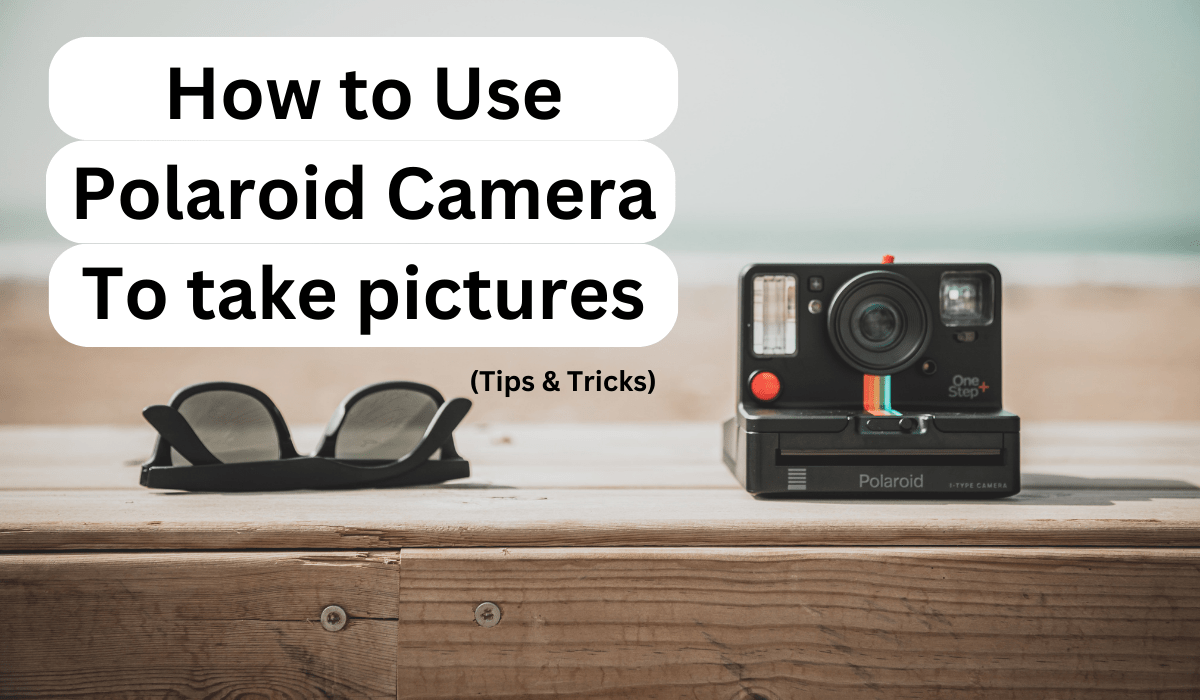Going on a trip with your friends is so festive, and you just want to capture the beautiful moment you are having with your friends. Imagine you are having the pictures and suddenly your camera goes out of work and your phone’s memory runs out.
You must wish to find ways to help you save those images. Don’t you? Reduce your hassle, as the Polaride camera is here to save your day.
A “Polaroid camera” regularly alludes to an instant camera that the Polaroid Enterprise popularized.
Instant cameras permit you to require a photo and have a physical print of that photo in a matter of minutes, disposing of the requirements for conventional film development or digital processing.
These cameras were particularly prevalent within the latter half of the 20th century. Whereas the first Polaroid Corporation confronted monetary inconveniences and went bankrupt, the instant camera concept has been resent for a long time, with different companies creating cutting-edge versions.
Table of Contents
ToggleHow to Take A Polaroid Picture? Working of Polaroid Camera
To know how to use a Polaroid camera, you must first understand how it works. Here’s a nitty gritty depiction of how an ordinary Polaroid camera works:
Film Pack
Polaroid cameras utilize special film packs containing photographic paper and the fundamental chemicals to create the picture. The film pack is embedded into the camera.
Taking a Photo
Press the shutter button on the camera to uncover the film to light, capturing the picture on the photographic paper interior of the film pack. The photographic process starts promptly.
Film Development
The Interior of the film pack are layers of chemicals that respond to light exposure. This process starts the advancement of the picture.
The film ordinarily contains a negative and a positive layer. The negative layer captures the picture, and the positive layer contains the chemicals required for improvement.
Picture Formation
As the chemicals within the film respond to the light, they begin forming the picture. The exposed negative layer captures the scene in a turned-around form (like a negative film). The positive layer at that point starts to develop colors and make the ultimate picture.
Ejection
After a set improvement time (as a rule, around 1-2 minutes), the film is consequently shot out from the camera. A defensive cover at first covers up the photo.
Development
The improvement process proceeds as the shot-out photo is exposed for discussion. Colors and subtle elements become more unmistakable over the following few minutes.
You should shield the photograph from coordinated sunlight or intemperate warmth during this time because it can influence the ultimate picture quality.
Final Photograph
Once the development is complete (as a rule, within 10-15 minutes), you’re cleared out with a physical print of your photograph.
The picture shows up on the photographic paper regularly with a particular border, and you can observe it created right before your eyes.
How to Use A Polaroid Camera? 10 Fundamental Tips and Tricks

i) Understand the Camera Basics
Before you begin, familiarize yourself with your particular Polaroid camera demonstration. Read the client manually to get its features, settings, and restrictions.
ii) Check the Film Type
Polaroid cameras utilize diverse sorts of instant film to know how to take a Polaroid picture. Make sure you’re using the proper film for your camera demonstration. Film sorts can change in size and picture quality.
iii) Lighting Matters
Great lighting is vital for Polaroid photographs. Point for characteristic, diffused light when shooting outside, and use flash or outside lighting to avoid underexposure.
iv) Composition
Consider composition when it comes to how to use a Polaroid camera. Utilize the rule of thirds, outline your subject, and explore with diverse angles and points of view to form your photographs visually engaging.
v) Focus
Polaroid cameras have settled focus, so guarantee your subject is at an appropriate distance for sharp, clear photographs. Most models focus between 2 to 5 feet (0.6 to 1.5 meters) absent.
vi) Keep It Consistent
Polaroid cameras can be inclined to camera shake. Utilize a tripod or discover a steady surface to rest your camera on when taking photographs to avoid blurriness.
vii) Try with Introduction
A few Polaroid cameras have introduction settings. Explore with these settings to control the brightness and obscurity of your photographs, particularly in changing lighting conditions.
viii) Time Your Shots
Depending on the sort of Polaroid film, the picture may take some minutes to create entirely. Be persistent and avoid touching the photo during this time to avoid smearing.
ix) Utilize Filters and Embellishments
Numerous Polaroid cameras offer connections and filters to upgrade your photographs. Explore with color channels, close-up focal points, and other adornments to include imaginative effects.
x) Keep Film Stored Appropriately
Instant film is touchy to light and temperature. Store the unused film in a cool, dim place and avoid uncovering it to coordinate daylight or extraordinary warmth to preserve its quality.
A Bonus Tip You Must Keep in Your Mind While Using Camera
Do you want to know the bonus tip on how to use a Polaroid camera? Grasp Imperfections Polaroid photographs regularly have interesting characteristics like color shifts, vignetting, and delicate focus. Grasp these defects as a portion of the charm of instant photography.
Final Words
Polaroid cameras were celebrated for instant satisfaction, permitting you to hold a substantial photo in your hands minutes after taking a picture.
With the basic tips and tricks on how to use a Polaroid camera, you can capture memorable moments without fearing how to save the captures. In any case, as digital photography became more prevalent, Polaroid cameras confronted a decrease in notoriety.
Still, there remains a committed community of photographers and enthusiasts who proceed to appreciate the exciting and nostalgic involvement of utilizing instant cameras.
Also Read: 10 Best Body Thermometer Apps for Fever (Android and iOS)




